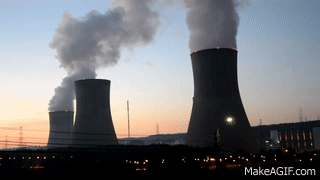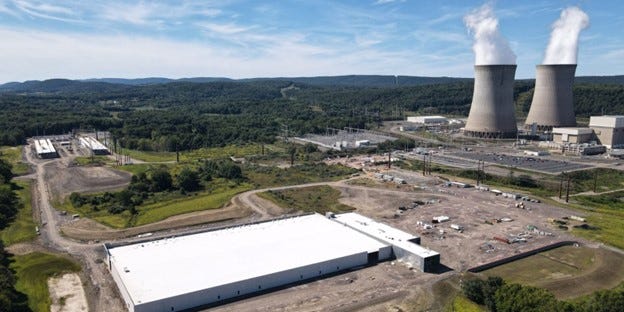As I’ve discussed in earlier posts, the race to lock up ever more ambitious power source for AI Data centers, at this stage of the AI Tech Wave, is on. As the WSJ highlights in “Tech Industry Wants to Lock Up Nuclear Power for AI“
“Largest tech companies are looking to buy nuclear power directly from plants, which could sap the grid of critical resources.”
“Tech companies scouring the country for electricity supplies have zeroed in on a key target: America’s nuclear-power plants.”
“The owners of roughly a third of U.S. nuclear-power plants are in talks with tech companies to provide electricity to new data centers needed to meet the demands of an artificial-intelligence boom.”
“Among them, Amazon Web Services is nearing a deal for electricity supplied directly from a nuclear plant on the East Coast with Constellation Energy, the largest owner of U.S. nuclear-power plants, according to people familiar with the matter. In a separate deal in March, the Amazon.com AMZN -1.21%decrease; red down pointing triangle subsidiary purchased a nuclear-powered data center in Pennsylvania for $650 million.”
“The discussions have the potential to remove stable power generation from the grid while reliability concerns are rising across much of the U.S. and new kinds of electricity users—including AI, manufacturing and transportation—are significantly increasing the demand for electricity in pockets of the country.”
“Nuclear-powered data centers would match the grid’s highest-reliability workhorse with a wealthy customer that wants 24-7 carbon-free power, likely speeding the addition of data centers needed in the global AI race.”
“But instead of adding new green energy to meet their soaring power needs, tech companies would be effectively diverting existing electricity resources. That could raise prices for other customers and hold back emission-cutting goals.”
The scale of these efforts to Power the next generation of AI data centers is unprecedented, as the WSJ continues to outline:
“The nuclear-tech marriage is fueling tensions over economic development, grid reliability, cost and climate goals in states including Connecticut, Maryland, New Jersey and Pennsylvania.
“Amazon’s deal in Pennsylvania set off alarm bells for Patrick Cicero, the state’s consumer advocate. Cicero said he is concerned about cost and reliability if “massive consumers of energy kind of get first dibs.” It is unclear if the state currently has the regulatory authority to intervene in such deals, he said.”
“Never before could anyone say to a nuclear-power plant, we’ll take all the energy you can give us,” said Cicero.”
And they get to rush to the front of the line:
“The data center that Amazon purchased in Pennsylvania can receive up to 960 megawatts of electricity, enough to power hundreds of thousands of homes. The acquisition accelerated interest in so-called behind-the-meter deals, in which a large customer receives power directly from a plant.”
“The relatively new arrangements mean data centers can be built years faster because little to no new grid infrastructure is needed. Data centers could also avoid transmission and distribution charges that make up a large share of utility bills.”
These developments in the US represent a bottom up rush to accelerate Nuclear and other energy sources for AI Instructure in this AI Tech Wave. As I noted a few months ago, we’re seeing a top-down effort in countries like China to do the same in a different manner:
“While on nuclear power, viewed from the US/China geopolitical tech competition filter, China is currently the world leader in new nuclear plants coming online in less than a decade. They have over 20 plans with over 20 Gigawatts of planned nuclear capacity. India is number two. The US is meaningfully behind on that ramp for now on the nuclear plant front, as CNBC notes.”
That piece highlights the lay of the land in terms of Nuclear plants in the US vs China, but the hard reality for now remains:
“In new nuclear plants to come, China for now has the lead.”
So in that context, the current acceleration in the US catalyzed by US AI data center cloud companies may be a feature, not a bug. For a deeper look at the AI driven power demands ahead, would recommend this Semianalysis piece here as well.
Power demand for AI data centers worldwide, is a fluid and rapidly evolving scarce input in the AI Tech Wave.
It’s easy to get startled by both over and under-estimates here given the rapid changes in underlying AI technologies. But the general direction in demand as being up and to the right is a correct one. And Nuclear power has a key role to play here over the next decade, both in the US and China. Stay tuned.
Happy July 4th!
(NOTE: The discussions here are for information purposes only, and not meant as investment advice at any time. Thanks for joining us here)






